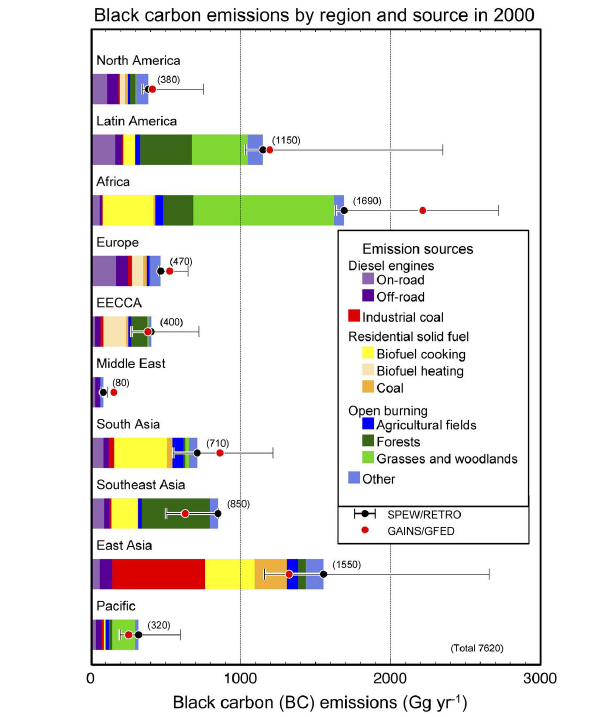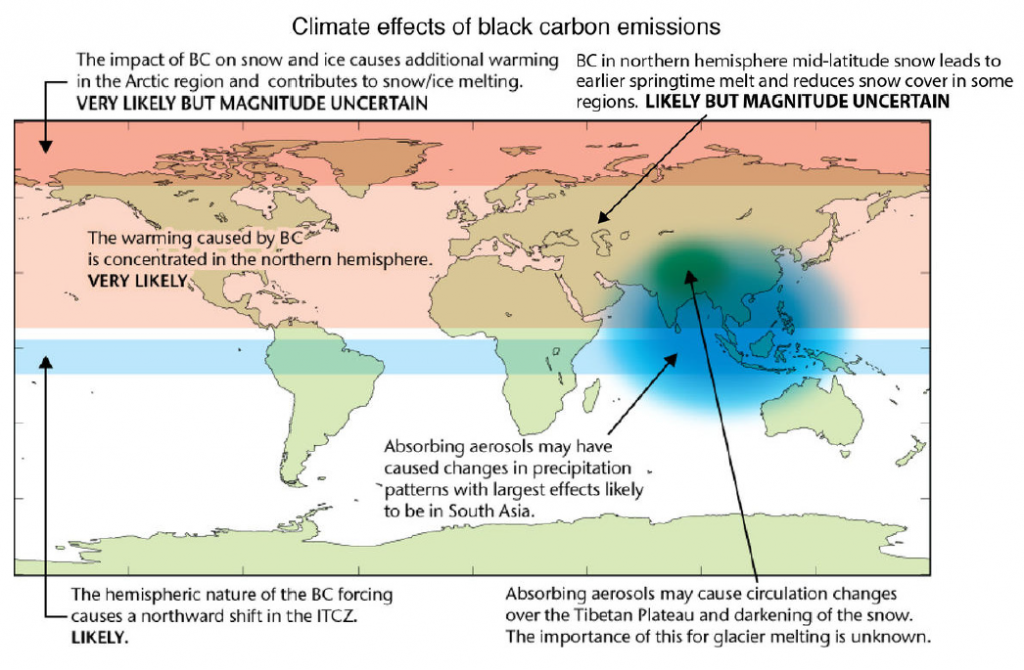Last week, an amazingly comprehensive, open-access report came out in JGR-Atmospheres on black carbon (BC): “Bounding the role of black carbon in the climate system: A scientific assessment” by Tami Bond and many, many co-authors. If you’d like something shorter to read, stick to the executive summary in the beginning or this write-up here .
It’s divided up into 8 sections that cover all things BC, from its basic properties to emissions inventory by location and source to its direct and indirect effects on climate.
One of the big take-aways from the work is that it found BC plays a larger role on climate impact than previously estimated, with roughly two-thirds the total forcing (or, put more simply, the warming effect) of carbon dioxide. Though, it’s complicated to fully tease out BC’s effect on climate for many reasons. One of those reasons is that BC is almost never found as a pure substance in the atmosphere; it’s co-emitted with other species that can be warming or cooling agents (and just what species and how much depend on the emission type). Also, the ways in which BC affects clouds/precipitation is complicated and not well understood.
So where and what are the sources of BC? Figure 3.3 from Bond et al. (2013) sums it up:
The major sources of BC in the world come from East Asia, Africa, and Latin America. And the most dominant source of BC is open-burning.
And lastly, a great figure that explains the current state of our knowledge of BC’s effect on climate is Figure 8.4 from Bond et al. (2013):


